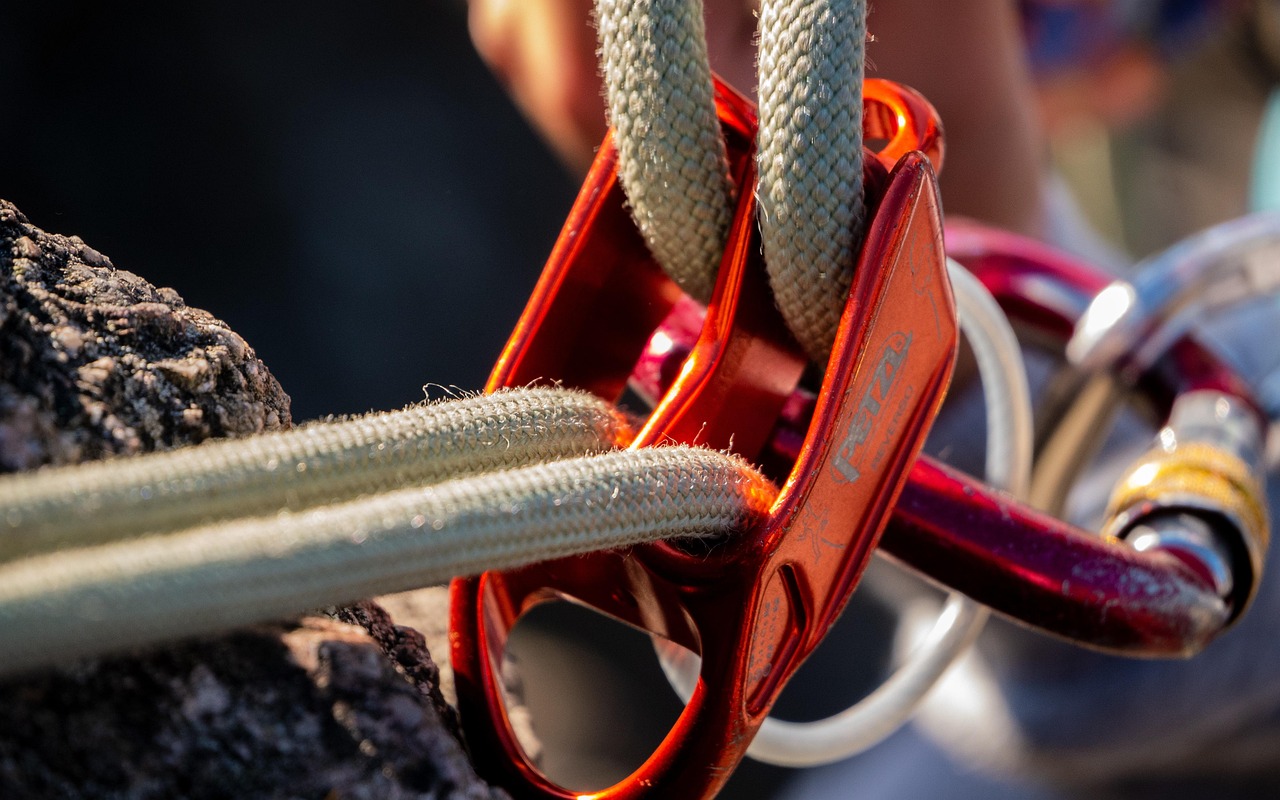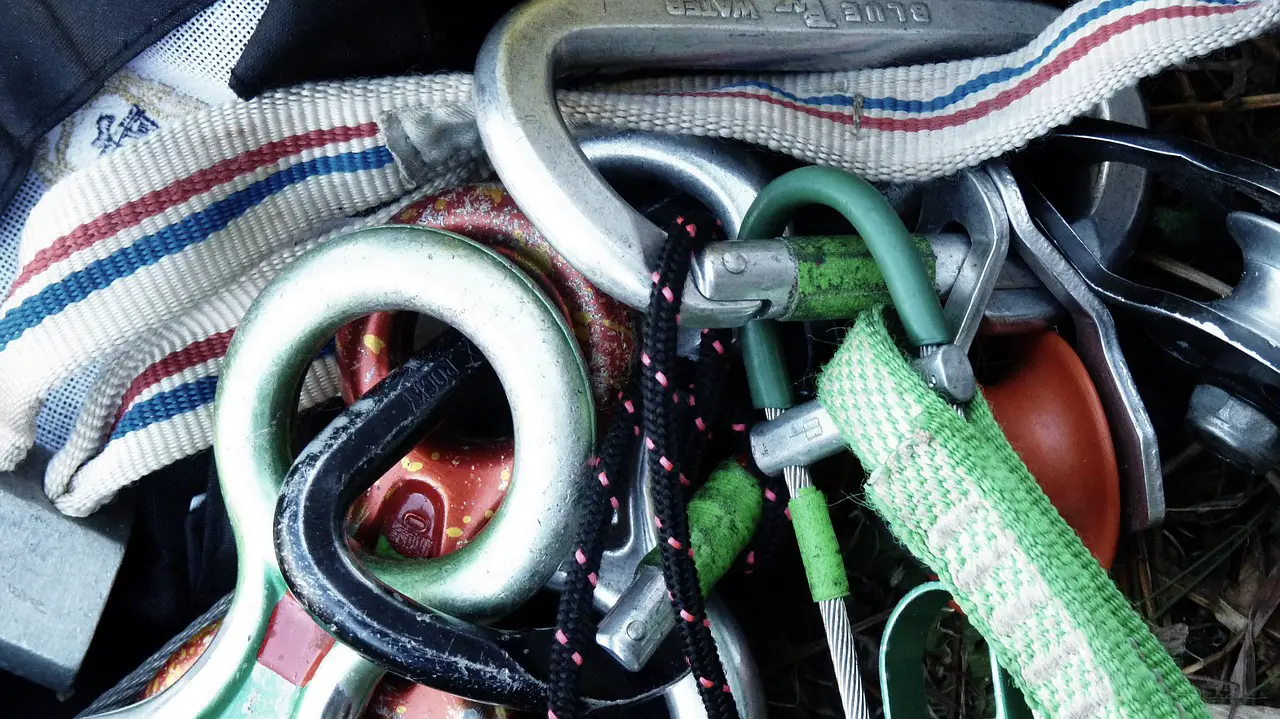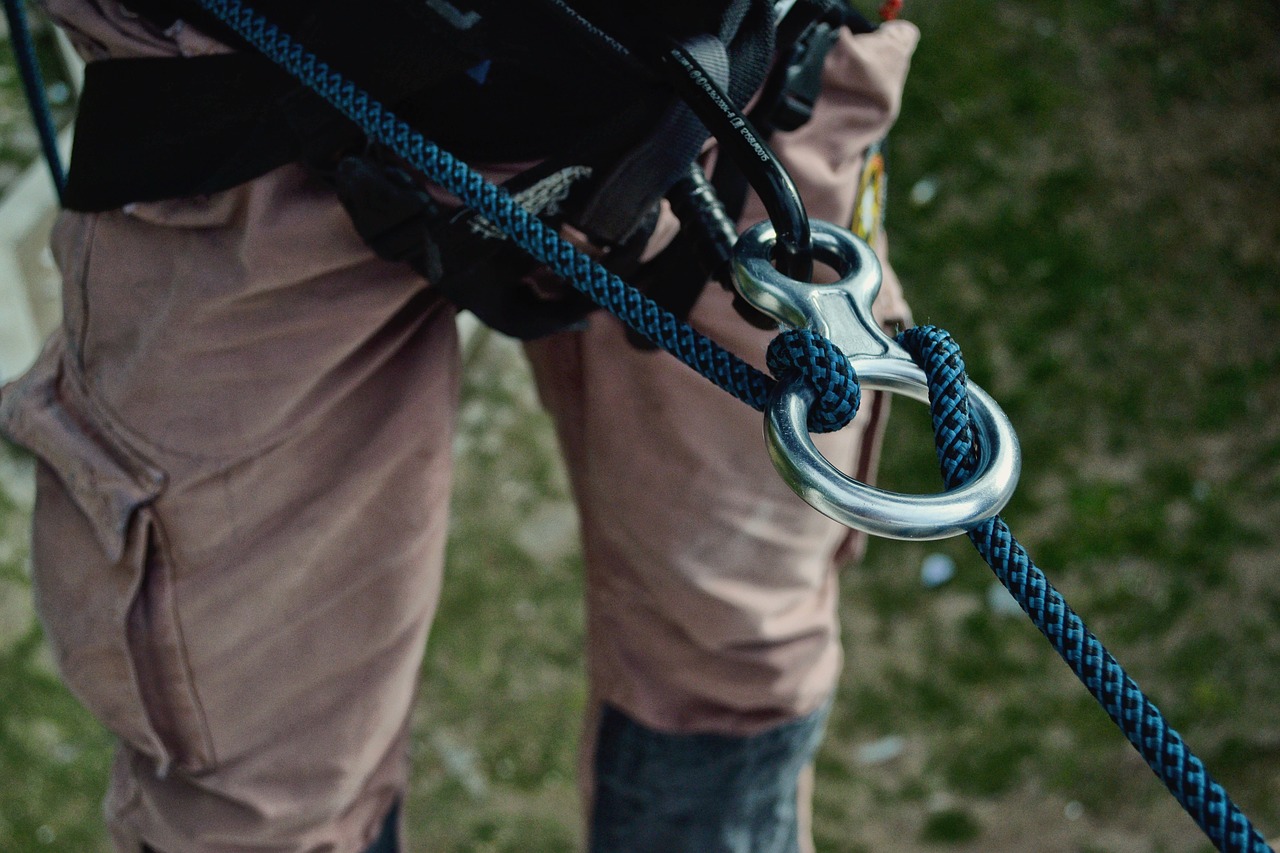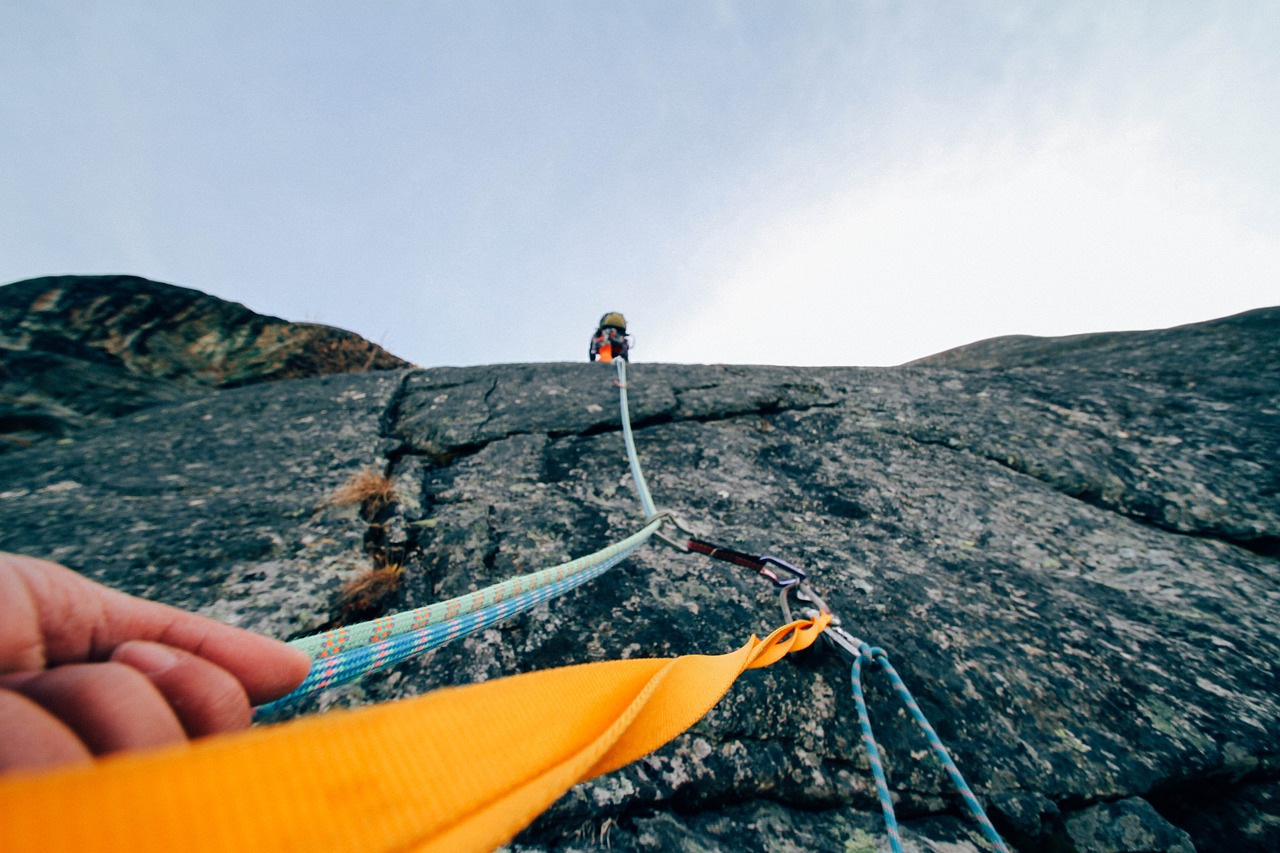Climbing equipment is essential for safe tree pruning jobs. Proper gear ensures the safety of the climber and the efficiency of the work. Key equipment includes harnesses, ropes, and helmets, which provide security and support while accessing tree branches.
Tree pruning is a vital maintenance task for trees in both urban and rural settings. It promotes healthy growth, removes dead or diseased branches, and enhances the overall appearance of the tree. However, pruning can be dangerous without the right climbing equipment. Choosing appropriate gear not only safeguards the climber but also increases productivity during the job.

Understanding the types of climbing equipment available is crucial for anyone involved in tree care. Each piece of gear serves a specific purpose and can significantly impact the safety and effectiveness of pruning tasks. Below is a table highlighting essential climbing equipment used in tree pruning:
| Equipment | Purpose | Key Features |
|---|---|---|
| Climbing Harness | Supports the climber’s body | Adjustable straps, padded for comfort |
| Ropes | Provides safety and maneuverability | Dynamic or static, rated for climbing |
| Helmet | Protects the head from falling objects | Lightweight, durable material, adjustable fit |
| Carabiners | Connects safety lines and harness | Locking mechanisms, various shapes |
| Saddle | Allows for comfortable sitting while working | Padded seat, multiple attachment points |
Essential Climbing Gear
The right climbing gear is critical for anyone undertaking tree pruning. Each component plays a role in ensuring safety and efficiency. Below are some of the most important pieces of equipment to consider:
Climbing Harness
A climbing harness is one of the most important pieces of equipment. It secures the climber to the rope system and distributes weight evenly. Look for harnesses that are adjustable and padded for comfort during long periods of use. A well-fitted harness allows for improved movement and reduces fatigue.

Climbing Ropes
Climbing ropes come in two main types: dynamic and static. Dynamic ropes are designed to stretch under load, absorbing shock. They are better suited for climbing. Static ropes do not stretch as much and are ideal for rigging and lowering branches. Always choose ropes that meet safety standards and have the appropriate weight rating for your tasks.
Safety Helmets
A safety helmet is essential when working in trees. It protects against falling debris and impacts. When selecting a helmet, opt for one that fits snugly and has ventilation to keep cool during work. Many helmets also come with additional features like a visor or ear protection.
Carabiners and Rappel Devices
Carabiners are used to connect components of your climbing system. They come in various shapes and sizes, including locking carabiners that prevent accidental opening. Rappel devices allow you to control your descent safely. Choose high-quality materials to ensure durability and strength.

Footwear
Proper footwear is often overlooked but is crucial for climbing trees safely. Climbing boots should provide good grip on branches and stability on uneven surfaces. Look for boots with a stiff sole and ankle support to prevent injuries while working at heights.
Other Essential Tools
In addition to climbing gear, several tools can enhance efficiency during tree pruning:
- Saws: For cutting branches, both hand saws and chainsaws can be used depending on branch size.
- Pruning Shears: Ideal for smaller branches and foliage.
- Loppers: For thicker branches that require more cutting power.
- Rope Saw: Useful for reaching high branches without needing to climb.
In summary, having the right climbing equipment ensures not only safety but also enhances productivity during tree pruning jobs. Investing in quality gear pays off by allowing you to work efficiently while minimizing risks associated with climbing trees.

Safety Precautions and Best Practices
When engaging in tree pruning, safety should always be the top priority. Proper use of climbing equipment and adherence to best practices can significantly reduce risks. This section covers essential safety precautions to follow while performing tree pruning jobs.
Pre-Work Safety Checklist
Before beginning any tree pruning job, it is crucial to conduct a thorough safety check. Below is a checklist of items to review:
- Inspect Equipment: Check all climbing gear for wear and tear. Look for frayed ropes, damaged harnesses, or malfunctioning carabiners.
- Assess the Area: Look for hazards such as power lines, unstable ground, or nearby traffic.
- Wear Appropriate Gear: Ensure that you are wearing all necessary protective equipment, including helmets and gloves.
- Have a First Aid Kit: Keep a fully stocked first aid kit nearby in case of emergencies.
- Plan the Work: Outline the specific branches to be pruned and the best approach for accessing them safely.
Climbing Techniques for Safety
Using proper climbing techniques can greatly enhance safety during tree pruning. Here are some techniques to consider:
- Three Points of Contact: Always maintain three points of contact with the tree or climbing structure. This could be two hands and one foot or two feet and one hand.
- Foot Placement: Place your feet securely on branches that can support your weight. Avoid stepping on branches that are dead or appear weak.
- Use a Systematic Approach: Plan your route up and down the tree carefully. Avoid unnecessary movements that could lead to slips or falls.
- Communicate with Ground Crew: If working with a team, establish clear communication protocols to ensure everyone is aware of what is happening at all times.
Types of Climbing Systems
Understanding different climbing systems can help you choose the best option for your tree pruning needs. Here are some common climbing systems used in tree care:
Single Rope Technique (SRT)
The Single Rope Technique is widely used for accessing trees efficiently. It involves using one rope anchored at the top of the tree. Here are some key features:
- Efficiency: Allows for quick ascents and descents.
- Simplicity: Requires fewer components than other systems.
- Versatility: Can be used for various tree types and heights.
Dual Rope Technique (DRT)
The Dual Rope Technique utilizes two ropes: one for climbing and one for safety. This system offers additional security but requires more gear.
- Increased Stability: Provides a backup system in case one rope fails.
- Better Load Distribution: Reduces strain on the climber and equipment.
- More Complex Setup: Requires additional knowledge and skills to use effectively.
Gear Maintenance and Inspection
Caring for climbing equipment is essential to ensure its longevity and effectiveness. Regular maintenance helps identify potential issues before they become serious problems.
Routine Checks
Perform routine checks on your climbing gear after each use. Here are some maintenance tips:
- Cleansing: Clean all equipment with mild soap and water to remove dirt and sap.
- Visual Inspection: Examine ropes for frays, knots, or signs of wear. Check harnesses for broken straps or buckles.
- Storage: Store equipment in a cool, dry place away from direct sunlight to prevent deterioration.
- Manufacturer Guidelines: Follow manufacturer recommendations regarding lifespan and replacement intervals for safety gear.
Annual Professional Inspection
In addition to routine checks, consider having your climbing equipment inspected by a professional annually. This ensures that all gear meets safety standards and is in optimal condition for use.
Selecting Quality Gear
The quality of climbing equipment plays a crucial role in ensuring safety during tree pruning tasks. Here are some factors to consider when selecting gear:
- Certification: Always choose equipment that meets industry safety standards, such as those set by the American National Standards Institute (ANSI) or the International Organization for Standardization (ISO).
- User Reviews: Research customer feedback on climbing gear to gauge reliability and performance.
- Brand Reputation: Purchase from reputable brands known for their commitment to safety and quality in climbing equipment.
By understanding safety precautions, climbing techniques, and gear maintenance, you can enhance your efficiency and safety during tree pruning jobs. Investing time in proper training and selecting high-quality equipment will pay off in the long run.
Advanced Climbing Techniques
Mastering advanced climbing techniques is essential for tree pruning professionals. These techniques not only improve efficiency but also enhance safety when navigating complex tree canopies. In this section, we will explore various advanced climbing methods and their applications.
Tree Climbing Knots
Knots play a critical role in climbing safety and effectiveness. Learning how to tie and use various knots can greatly enhance your climbing experience. Here are some essential knots used in tree climbing:
- Bowline Knot: This knot creates a fixed loop at the end of a rope. It is easy to untie even after bearing weight.
- Figure Eight Knot: A versatile knot that can be used as a stopper or to create a loop. It is strong and secure.
- Double Fisherman’s Knot: Used to join two ropes together, providing a secure connection for climbing systems.
- Prusik Knot: This knot is used as a friction hitch to ascend or descend a rope. It grips the rope when weight is applied.
Ascending Techniques
Efficient ascending techniques are vital for reaching higher branches safely. Here are common methods employed by climbers:
- Foot Ascenders: These devices attach to the foot and allow for quick upward movement on the rope while keeping hands free for climbing.
- Hand Ascenders: These are used in conjunction with the Prusik knot for added security during ascents.
- Daisy Chains: A series of loops sewn into a length of webbing used for positioning and securing oneself while climbing.
Descending Techniques
Just as ascending techniques are important, knowing how to descend safely is equally crucial. Here are common descending techniques:
- Controlled Descent Device: Devices like descenders or figure-eight devices allow for controlled and safe descent down the rope.
- Rappelling: A technique that involves sliding down a rope using a friction device, allowing precise control over speed and descent angle.
- Using a Prusik Knot: The Prusik knot can also be employed to descend safely by releasing tension gradually while maintaining control.
Environmental Considerations
Climbing and pruning trees come with environmental responsibilities. Understanding the ecological impact of your work is essential for sustainable practices. Here are key considerations:
Tree Health and Growth
When pruning, it is crucial to maintain the health of the tree. Consider the following:
- Timing: Prune at the right time for each species. Late winter or early spring is often ideal before new growth begins.
- Avoid Over-Pruning: Removing too much foliage can stress the tree and hinder growth. Follow the “one-third rule,” which suggests not removing more than one-third of the tree’s foliage at once.
- Cutting Techniques: Use proper cutting techniques to promote healing. Make clean cuts at the branch collar to minimize damage.
Wildlife Considerations
Trees often serve as habitats for various wildlife species. Before pruning, it’s important to consider:
- Nesting Seasons: Be aware of bird nesting seasons to avoid disturbing laid eggs or young birds.
- Biodiversity: Ensure that your pruning practices promote biodiversity instead of harming local ecosystems.
- Pesticide Use: Avoid using harmful chemicals that can affect non-target species living within the tree.
Training and Certification
Proper training and certification are essential in ensuring safe and effective tree pruning practices. Many organizations offer courses and certifications specific to tree care and climbing techniques.
Types of Training Programs
The following are common types of training programs available for tree care professionals:
- Basic Tree Climbing Courses: Introduce fundamental climbing techniques, knots, and safety practices.
- Advanced Climbing Techniques: Focus on more complex climbing systems, rescue procedures, and professional rigging methods.
- Cabling and Bracing Workshops: Teach methods to support trees structurally, ensuring their health and stability.
- Safety Training Programs: Cover OSHA regulations, risk assessment, first aid, and emergency response protocols.
Certification Bodies
Certain organizations provide certification for tree care professionals, indicating their level of expertise. Some notable certification bodies include:
- International Society of Arboriculture (ISA): Offers various certifications for arborists, including Certified Arborist, Tree Worker, and Utility Specialist.
- Trees USA: Provides training and certification for tree care professionals across various disciplines.
- National Association of Landscape Professionals (NALP): Offers educational programs and certification in landscape management, including tree care.
Investing in training not only enhances safety but also improves overall skills and knowledge in tree pruning practices. By understanding advanced climbing techniques, environmental considerations, and the importance of training, professionals can ensure successful and responsible tree care.
Practical Applications of Climbing Equipment
Understanding how to effectively use climbing equipment in tree pruning is vital for both safety and efficiency. The right gear, combined with skilled techniques, enables climbers to perform their tasks effectively while minimizing the risk of accidents. Here are some practical applications of climbing equipment in tree pruning:
Accessing Difficult Areas
Many trees grow in challenging locations, making access difficult. Climbing equipment allows professionals to reach these hard-to-access areas safely. For example:
- Ropes: A well-anchored rope system provides stability and allows climbers to access limbs that may be too high or awkward to reach from the ground.
- Foot Ascenders: These devices enable climbers to ascend quickly on the rope, allowing for efficient movement in large trees.
- Harnesses: A good harness keeps climbers secure while they work in high branches, facilitating the pruning process without fear of falling.
Enhancing Productivity
Using high-quality climbing equipment can significantly enhance productivity during tree pruning jobs. Here are some ways this is achieved:
- Specialized Tools: Equipment such as pole saws and loppers allows climbers to prune branches without needing to climb down frequently, thus saving time.
- Team Coordination: Establishing a clear communication system with ground crew using radios or signaling devices can streamline the pruning process, enhancing overall efficiency.
- Proper Training: Professionals who invest time in training can execute tasks more quickly and accurately, reducing job time and improving outcomes.
Improving Safety Practices
The use of climbing equipment directly impacts safety practices. Here are ways to improve safety during tree pruning:
- Regular Safety Drills: Conducting drills on proper safety techniques ensures that all team members are prepared for emergencies.
- Utilization of Safety Gear: Always wearing helmets, gloves, and eye protection minimizes injuries from falling debris or accidents.
- Emergency Preparedness: Having a clear plan in place for emergencies, including training in first aid and rescue procedures, is crucial for safety.
The Importance of Community and Networking
Building a network within the tree care community can enhance your skills and knowledge. Engaging with other professionals can provide valuable insights and opportunities. Here are some benefits of networking:
- Sharing Knowledge: Connecting with other tree care experts allows for the sharing of techniques, best practices, and new technology.
- Mentorship Opportunities: Finding a mentor in the industry can accelerate learning and skill development.
- Access to Resources: Networking can lead to access to resources such as workshops, seminars, and training programs that may not be readily available.
Final Thoughts
Climbing equipment is essential for safe and effective tree pruning. Proper training, knowledge of advanced techniques, and understanding the environmental impact of pruning work are critical to becoming a successful tree care professional. By investing in high-quality gear and continuous education, climbers can ensure not only their own safety but also the health of the trees they care for.
The integration of safety protocols, efficient climbing techniques, and regular maintenance of equipment will ultimately lead to greater productivity and fewer accidents. Remember that tree care is not just about cutting branches; it involves a deep understanding of arboriculture and a commitment to sustainable practices. Through ongoing training and professional networking, you can enhance your skills and contribute positively to the field of tree care.
The journey of mastering climbing techniques and using the right equipment is ongoing. Whether you are an aspiring climber or an experienced professional, there is always more to learn. Embrace this challenge, stay informed about new developments in the industry, and prioritize safety above all else. By doing so, you will not only advance your career but also foster the growth of healthy trees in our communities.
